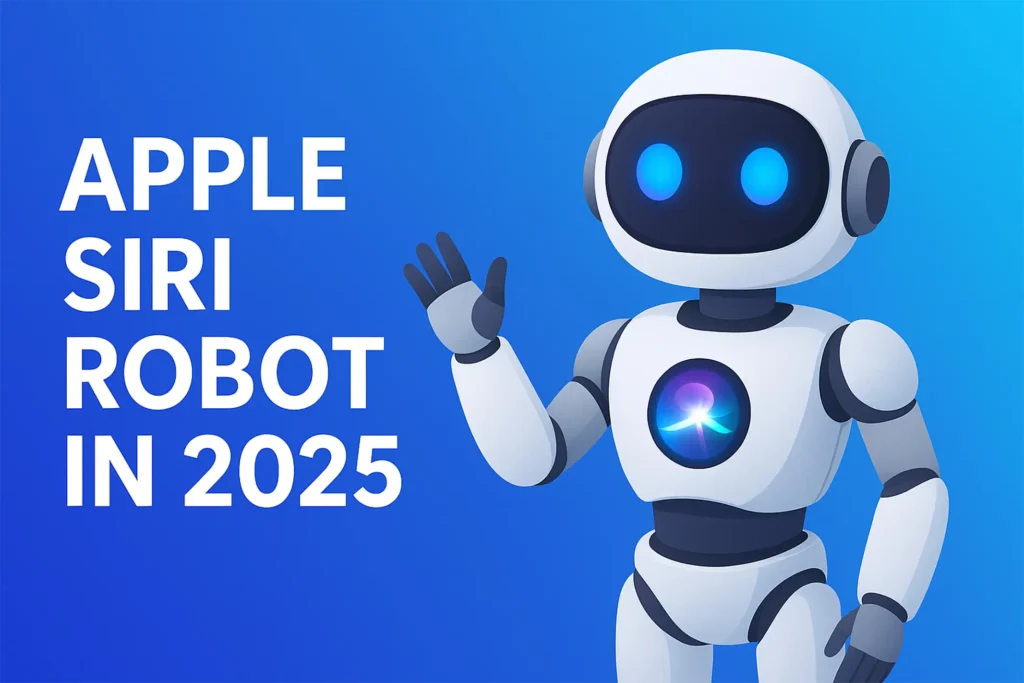I still remember when Siri first landed on the iPhone back in 2011. It was fun, but let’s be honest — you mostly used it for jokes, quick weather checks, or to set an alarm without touching the screen. Nobody imagined that, a little over a decade later, Siri would step out of the phone and into the world as an actual robot.
Yes, in 2025, Apple’s Siri is no longer just a voice tucked away in your pocket. It’s a physical device — something that can move, respond, and feel more like a companion than an app.
The Long Road Here
Siri didn’t get here overnight. Apple spent years quietly improving it — making it understand context better, weaving it into Macs, Watches, and eventually the entire Apple ecosystem. Bit by bit, it stopped being a “gimmick” and started feeling useful.
Now, Apple has gone further. The Siri Robot can move, sense, and react to what’s happening around it. It’s not the sci-fi humanoid you see in movies, but it’s much more than a speaker with a microphone.
Living With It
So what’s it like in practice? Imagine coming home and your Siri Robot is already adjusting the lights and reminding you about tomorrow’s early meeting. In the kitchen, it might suggest a recipe because it knows what groceries you have left. For someone older, it can keep track of medicine schedules or send alerts if something seems off.
And of course, it still handles the basics: music, entertainment, and quick answers. The difference is that it now feels present, not just hidden inside a device.
How It’s Different From Alexa and Google
The obvious comparison is Alexa or Google Assistant, but Apple’s robot stands apart for two big reasons. First, the Apple ecosystem. Everything talks to everything — your phone, your Mac, your TV, your watch. That tight integration is something competitors can’t really match.
Second, Apple’s obsession with privacy. Instead of constantly bouncing your data through the cloud, a lot of Siri’s processing happens on the device itself. That means faster answers and fewer questions about who might be listening in.
Strengths and Weak Spots
The appeal is clear. It saves you time. It adapts to your habits. It makes life easier, especially for people who need accessibility support.
But there are trade-offs. This is Apple, so the price will almost certainly be high. It’s also designed mainly for people already in the Apple world. And then there’s the bigger question: how comfortable are we really with machines that can read tone, detect mood, and respond like they care?
Looking Ahead
This feels like version one of something much bigger. It’s not hard to imagine future Siri Robots becoming more independent, more creative, and even tied into other Apple projects like cars.
What matters right now is that Apple has taken Siri out of our devices and given it a body. That changes things.
Final Take
The Apple Siri Robot in 2025 isn’t just another gadget release. It marks the point where voice assistants cross over into the physical world. It’s far from perfect — expensive, limited, maybe even a little unsettling at times — but it could easily be remembered as the moment personal tech turned a corner.


4 Responses
That’s a fascinating point about longshot value – often overlooked! Seeing platforms like ss777 slot download cater to Filipino players with GCash is smart. Makes access so much easier, like they said – feeding your wallet is a breeze! Good analysis.
I appreciate you pointing that out! 🙌 Longshot value really does fly under the radar sometimes. And yes, making things more accessible with options like GCash definitely adds convenience for players. Thanks for sharing your thoughts!
Thanks for sharing superb informations. Your web site is very cool. I am impressed by the details that you¦ve on this website. It reveals how nicely you perceive this subject. Bookmarked this website page, will come back for more articles. You, my friend, ROCK! I found just the information I already searched everywhere and just couldn’t come across. What a perfect website.
Wow, thank you so much for the amazing feedback! 😊 I really appreciate your kind words and support — it means a lot. I’m so glad you found the information helpful and that the site’s been useful to you. Thanks for bookmarking it — can’t wait to have you back for more!